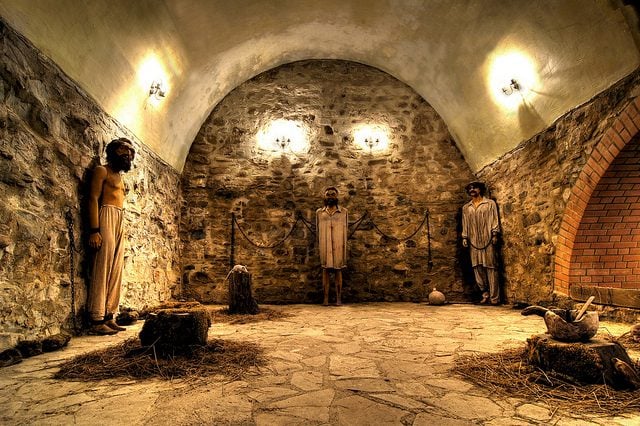It’s Easter. Do not be afraid to doubt.
Doubt boldly.
Doubt joyfully.
In fact, these are important, faithful and beautiful responses to the Paschal mystery, as author Rachel Held Evans demonstrated last week. Indeed, in the gospels, doubt and disbelief are important to the Easter experience, and Jesus does not condemn his disciples for them. So, if we want to experience the resurrection, I suggest that we not simply celebrate it or find joy and hope in it. We must doubt it, too. We must admit our disbelief.
In truth, Easter absorbs both the joy and triumph as well as the fear and disbelief, and is irreducible to just one experience of it. It would be easier if Easter were only the trumpet blasts and Alleluias. Or, it might even be easier if Easter were only fear and disbelief. But Easter is all of this, it holds all of it, even the contradictory emotions, and makes them one.
That is what makes the Paschal event such a profound mystery, and what makes Thomas’ response to news of the resurrection so authentic and so holy in this week’s gospel text.
After the resurrection, Jesus appears to his disciples, all except one. Thomas isn’t there. When he finally does resurface and his fellow disciples share the good news that they have seen their resurrected Lord, Thomas has some pretty strong reservations.
“Unless I see the nail holes and put my hands into his gaping wounds, I will not believe,” he replies.
It takes Jesus a full week to reappear to the disciples.
This time Thomas is with them.
He is waiting.
That one week, sadly, has been enough to brand Thomas as the archetypal doubter, the skeptic that demanded proof.
It hardly seems fair. He wasn’t the only disciple in the Christian gospels to express disbelief or doubt at the reports of resurrection. Peter and John both had to see the empty tomb for themselves rather than rely on the word of some hysterical women. But it’s also unfair because it doesn’t quite fit with who Thomas is. When all evidence pointed to the contrary, Thomas stuck around, in spite of his doubts, waiting to see if Jesus would return.
What, I wonder, made him stay, after such an adamant refusal to believe his friends’ reports?
Perhaps he wanted to see if Jesus was true to his word, that he would, as he had once promised, go at all costs in search of the one lost sheep wandering in the darkness. Maybe he wanted to prove his friends wrong. Maybe he had something deeper than belief in the resurrection.
Maybe he had faith in his Lord.
So he waited in the darkness of his own unbelief for the ghost of God to reappear and breath on him, too. This, to me, is more difficult and more courageous than the simple act of believing. That Thomas waits, while disbelieving, is the very definition of faithfulness, if not faith itself.
Sure, Thomas rather petulantly refuses to believe his friends, but he demonstrates faith that can move mountains, or at the least, pin one’s doubts to a room to wait on the return of a long-dead Lord. And in my experience, the latter is the more frustrating, miraculous even, work of faith.
To have the courage to wait.
And yet we know him as Thomas the Doubter.
But in truth, he is Thomas the Brave. And it is time to reclaim him.
Earlier in John’s gospel, Thomas is the only disciple with the courage to follow Jesus, no matter the cost. Not Peter the Rock. Not John the Beloved. Not the Sons of Thunder. Not the Zealot.
When Jesus hears that his dear friend Lazarus has died, the other disciples try to talk him out of returning to Bethany to mourn. The last time they were all there all hell almost broke loose. They were threatened with death, run out of town, made to feel, in no uncertain terms, wholly unwelcome.
The disciples believed that returning to Bethany, even to mourn the dead, would end in the death of them all. So while the other disciples hem and haw about not going, Thomas alone speaks up.
Thomas alone stands in solidarity with Jesus.
“Let us go with him,” Thomas says, “so that we may die with him.”
These are not the words of a doubter.
These are not even the words of a believer.
These are the words of a follower of Christ.
In all of the gospels, this is the only moment when one of the disciples, when faced with the possibility, affirms Jesus’ inevitable death.
Whenever Jesus speaks of his death, his disciples typically try to talk him out of it. In one memorable exchange, things get so heated between Jesus and Peter, that Jesus rebukes him and calls him not the Rock upon whom the church was built, but his adversary. “Get behind me Satan,” Jesus says to Peter.
In any event, Thomas’ willingness — eagerness almost — to die with Jesus casts his “doubts” about the resurrection in a different light.
Thomas’ reaction to the disciples claims to have seen Jesus resurrected is almost militant in its resistance. His reaction isn’t that of a skeptic or an unbeliever. Rather it’s the reaction of a spurned lover, wounded friend, someone in mourning.
Thomas was a man who resolved to die with Jesus, if that’s what following him meant, when none others would. And when Jesus finally appears to his disciples, Thomas is the only one who misses the resurrection reunion. The only one, in all the gospels, who accepted the reality of Jesus’ death and offered to die with Jesus, is the only one who cannot see the resurrection.
And what does one do when it seems everyone but you has seen the resurrection?
Thomas resolved to follow Jesus still.
Even if it meant waiting in a room full of believers with a head full of doubt.











